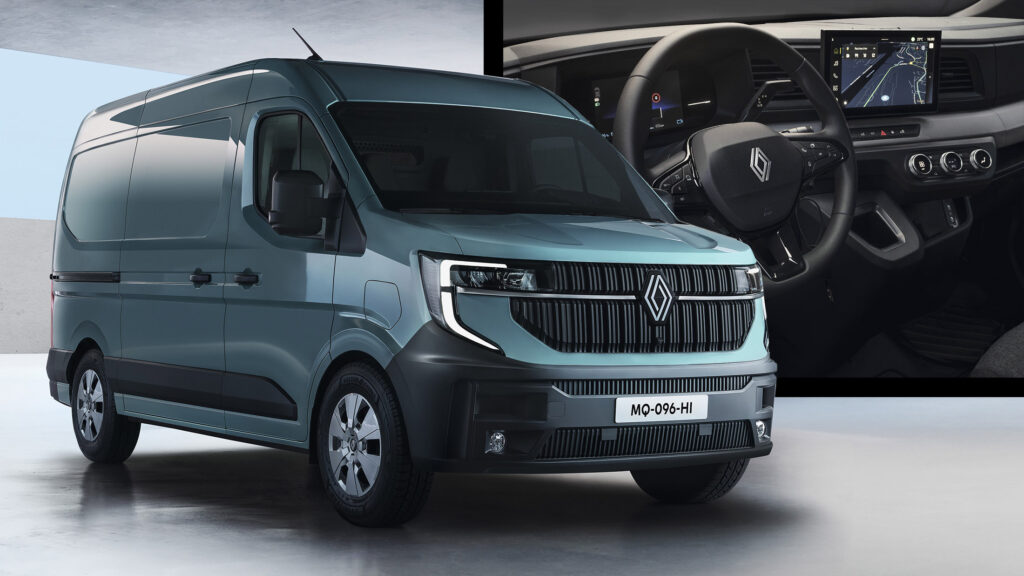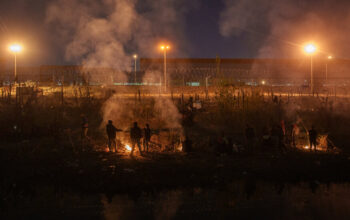The first all-new Master in over a decade has been redesigned from the ground up with sales to start next year
3 hours ago
 –>
–> 
–>
Renault took the wraps off the all-new Master light commercial vehicle (LCV), which benefits from a clean-sheet design for the first time in 13 years. Besides looking more modern than its predecessor, the new generation of the large van is a lot more aerodynamic, resulting in “class-leading” efficiency. The lineup will include diesel, fully electric, and hydrogen powertrain options.
The overhauled exterior adopts styling cues from Renault’s passenger lineup, including the Megane-style C-shaped LED headlights, a new emblem on the larger grille, and modern intakes on the bumper. The different lines on the profile and the redesigned tail prove that this is not a typical facelift but a clean-sheet design. Interestingly, while the standard color palette includes 7 options, there are over 300 special hues to choose from.
The shorter hood, reduced angle of the windscreen, and narrower rear end of the new generation make it significantly more aerodynamic than its predecessor, resulting in the “highest efficiency in its category”. Renault claims that the diesel-powered model’s CO2 emissions are 39g/km lower than before dropping below the 200 g/km mark. Similarly, the fully electric versions offer a 20% improvement in energy consumption, resulting in a longer range.
advertisement scroll to continue
Electric, diesel and hydrogen powertrain options
The new “multi-energy” platform of the Renault Master is compatible with diesel, electric, and hydrogen powertrains. The Blue dCi diesel is available in four different power outputs producing 105 hp, 130 hp, 150 hp, or 170 hp, while consuming less fuel and emitting fewer CO2 particles than before. The diesel engines can be mated to either a manual or a 9-speed automatic gearbox.
The fully electric Renault Master is powered by a single electric motor producing either 129 hp (96 kW / 130 PS) or 141 hp (105 kW / 143 PS) with 300 Nm (221 lb-ft) of torque. The less powerful version comes equipped with a 40 kWh battery pack offering 180 km (112 miles) of WLTP range. The other features a significantly larger 87 kWh battery, extending the driving range to 410 km (255 miles) which is more than double compared to the previous generation. The large battery is compatible with 130 kW DC fast charging, adding 229 km (142 miles) of range in 30 minutes. The EV also comes with Vehicle-to-Grid (V2G) and Vehicle-to-Load (V2L) charging capabilities.
More: Renault’s Future Lineup To Include 7 EVs, Developed And Built In Europe By Ampere
Last but not least, the Renault Master will also be available with a hydrogen H2-tech engine and a fuel cell (FCEV) powertrain in the near future. While Renault hasn’t disclosed the specific specifications for these versions, we anticipate a comprehensive presentation from the hydrogen-focused HYVIA sub-brand at a later date.
Inside, the S-shaped, curvy cockpit features a standard 10-inch touchscreen for the OpelR Link infotainment with Google built-in, an available digital instrument cluster, rotary dials for the climate controls, and a steering wheel that is borrowed from Renault’s passenger lineup.
The dark theme of the interior makes it look more upmarket than your typical LCV, although the most important aspect is practicality. In-cabin storage has been increased by 25% to up to 135 lt (4.8 cubic feet), thanks to the numerous compartments. Occupants have access to USB-C ports, wireless chargers, cupholders, drawers, door-mounted storage tiers, and a cab-ceiling slot, while the central seat can fold into a desk. Finally, the safety kit can include up to 20 ADAS.
The large van is available in more than 40 versions, with different lengths, heights, and cargo area configurations. The capacity ranges between 11-22 cubic meters (388-777 cubic feet), while the payload is up to 4 tonnes. Furthermore, Renault says that the Master offers the best-in-class loading width and length.
Competing models in the same category as this Renault Master include the Mercedes-Benz Sprinter and its counterpart, the VW Crafter, as well as the Ford Transit. Additionally, the recently refreshed Stellantis lineup of large vans, which encompasses the Fiat Ducato, Citroen Jumper, Peugeot Boxer, Opel Movano, and Toyota ProAce Max, also presents formidable competition.
The Renault Master will be produced in Batily, France, with all versions being built on the same assembly line. Pricing will be announced closer to the market launch which is scheduled for spring 2024.

